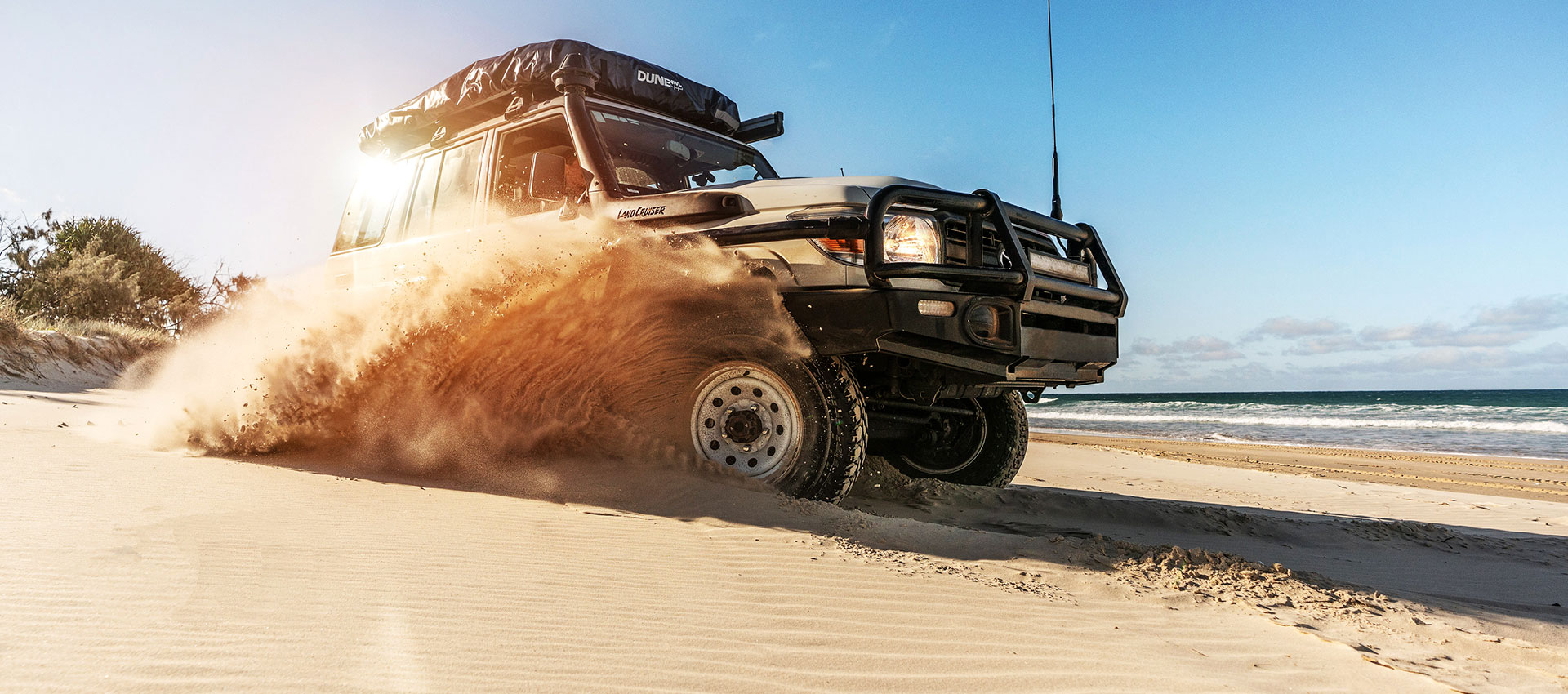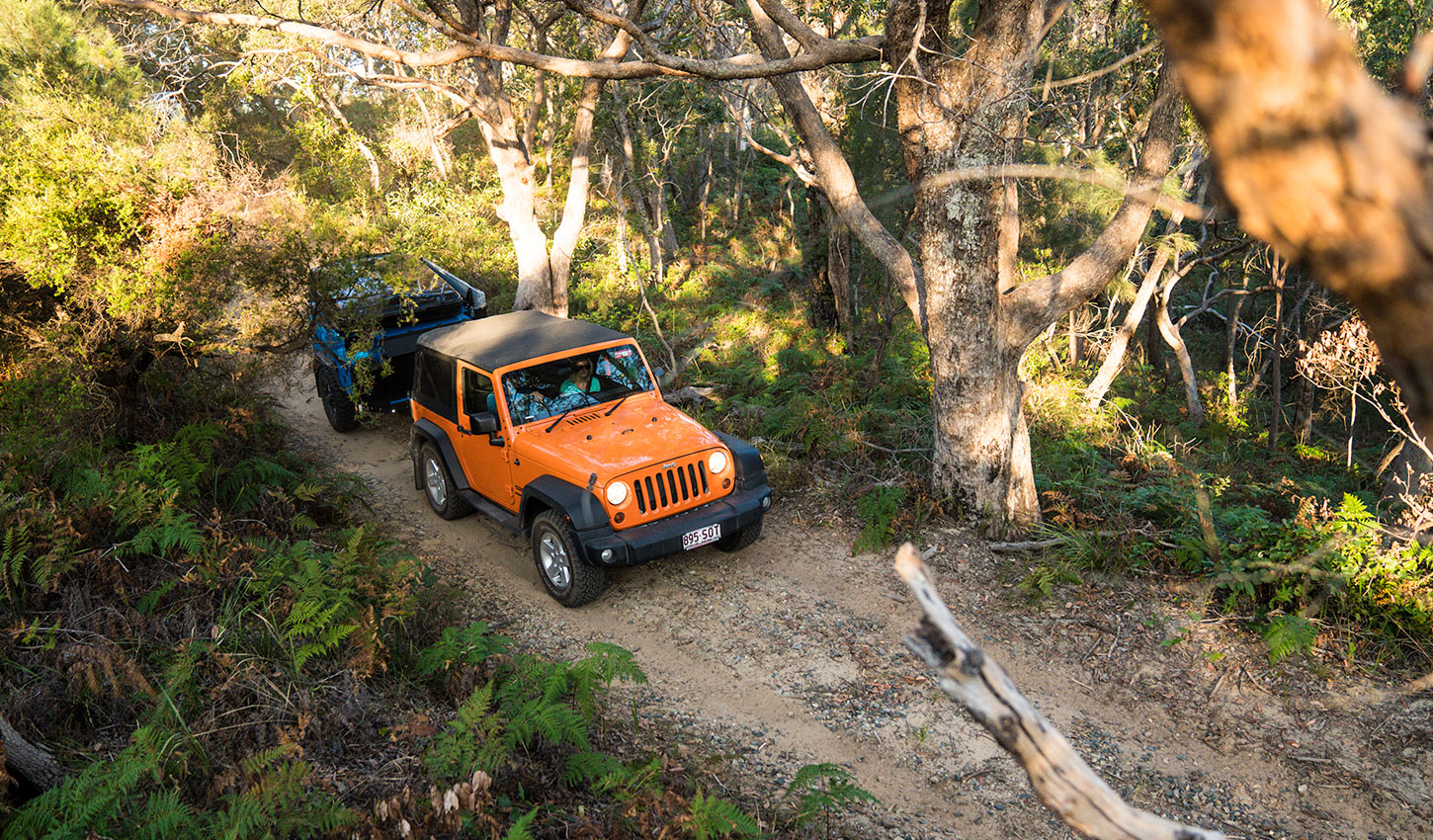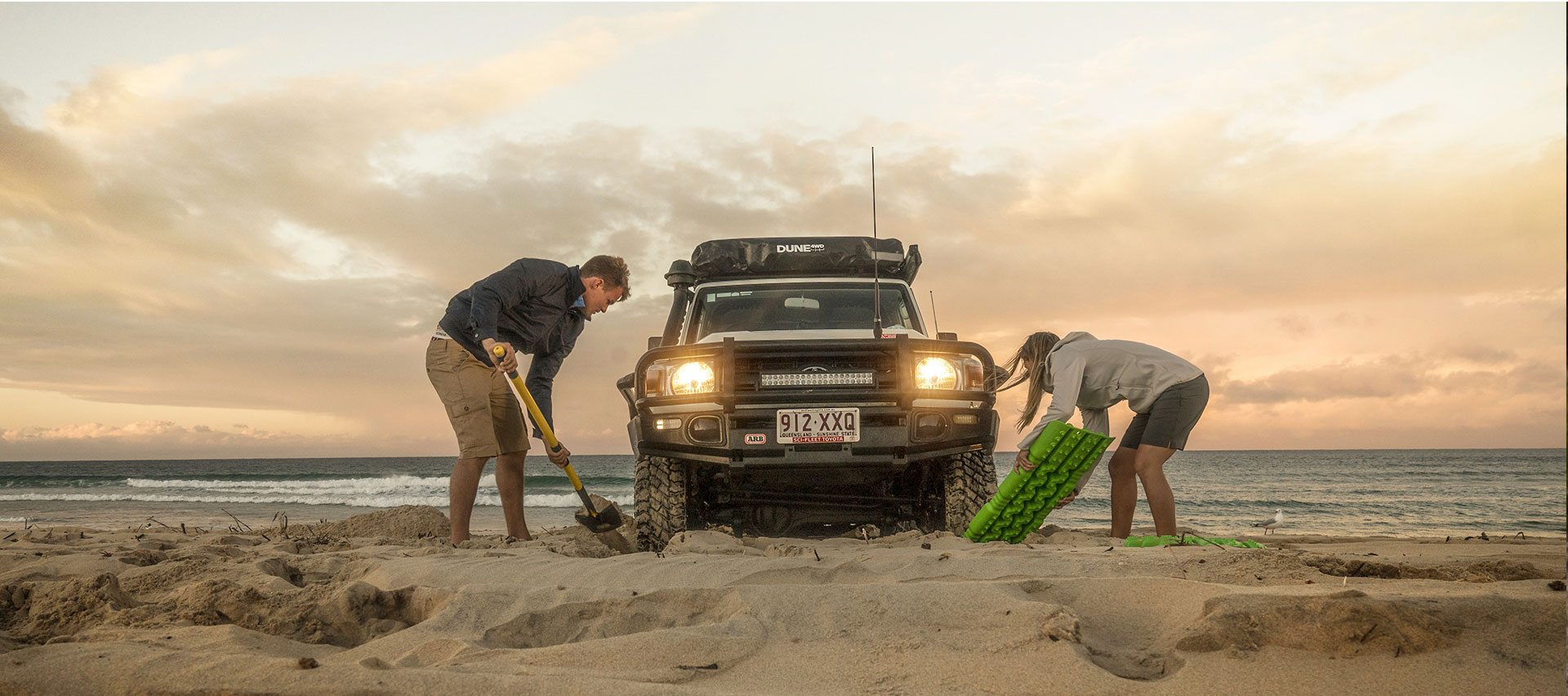| Your browser is not supported. | ||
|
Please browse our site using any of the following options:
| ||
4WD Basics & Essential Tips For Every Beginner

From couples to young (and growing) families, to the fellas taking off on their annual camping or fishing trip, to grey nomads exploring the length and breadth of Australia, 4WDs are the vehicle of choice when it comes to towing boats and caravans. For many people, 4WD touring is their passport to some of Australia's most spectacular natural hiking and camping wilderness that the ordinary passenger vehicle just wasn't cut out to reach. While off-road and 4WD adventuring is serious fun, it can also be extremely dangerous without the right gear - no matter how much your experience behind the wheel or how many vehicles you've driven across your lifetime.
There's a lot to familiarise yourself with when it comes to 4WDs and much of what you need to know will only come with trial and error. When dropping into your nearest Anaconda store, we suggest speaking directly with our team members for tips and advice on responsible off-roading. Picking the brains of the experts is a great way to increase your knowledge. In the meantime, here are some important basics and essential safety precautions to get you started on the right track.
Quick Links:
- Most Common 4WD FAQs
- Try Some Training
- Know Your 4WD
- Plan Your Route
- 4WD Equipment Checkups
- Essential 4WD Equipment To Always Bring With You
- Shop The Best 4WD Gear At Anaconda
Most Common 4WD FAQs
What does 4WD mean?
4WD means that the vehicle distributes power to all of the four wheels, resulting in all the wheels spinning at the same constant rate. 4WD is also known as four-wheel drive, all-wheel drive, 4x4 and four-by-four. A 4WD system is only found in vehicles that are built for off-road driving conditions.
Is it better to use 2WD or 4WD?
It all depends on what you want to do. Do you want to go for a scenic drive somewhere? Then a 2WD is better because you will be driving on roads and won't require power going to all the wheels. However, if you are going off-road or driving on unsteady terrain, then you are going to need power going to all of the wheels, meaning a 4WD is better.
What accessories do I need on 4WD?
We will explain what exact 4WD accessories you will need, but a quick breakdown would involve taking 4WD items such as a GPS system, spare tyres, food, water, a bull bar, recovery boards, a snorkel (if driving through deep waters), jerry cans, all-terrain tyres, tyre repair kits and a portable fridge.
Is it bad to engage 4WD while driving?
Most modern 4WD vehicles can be easily engaged into 4WD mode automatically when detecting a lack of surface traction. However, if you are using an older 4WD, then it will have to be engaged manually by stopping the vehicle and switching to neutral before engaging. If not, then it can cause serious damage to the 4WD system.
Are you supposed to go fast in 4WD?
It isn't recommended to drive any faster than around 88KPH when engaged in 4WD mode and driving on low traction surfaces for safety reasons. It is recommended that you drive no faster than 16KPH when in 4WD mode.

Try Some Training
If you're new to the world of 4WD touring, many drivers have found enrolling in an off-road driving course valuable. Not only do you get expert tuition in the finer points of off-roading but such courses will often take you through other aspects of the trip such as route planning, vehicle preparation, understanding weather and trip conditions from a 4WD perspective and how to safely change a tyre in challenging conditions.
Know Your 4WD
Whether you've invested in something that's come straight off the production line or you've made an informed secondhand purchase, knowing your car's limitations is the most important safety tip of all. Spend as long as it takes to go through the specific owner's manual that comes with your vehicle. The manual will outline important information about your 4WD like its maximum towing capacity, height clearances, approach and departure angles and the break-over angle (the largest angle your 4WD can climb without scraping the undercarriage or differentials) and recovery points if you need to be winched out of bother.
It will also outline how to use driver assistance aids including ABS and downhill assist/descent control. Knowing this type of information will more often than not save you from becoming stuck and/or irrevocably damaging your car. So, if you're buying a secondhand 4WD and it doesn't come with a manual, insist the seller supply one or go for another vehicle that has one.
Plan Your Route
Planning your route is as important as understanding the limits of your 4WD. Taking the time to research the roads to your destination will ensure you don't end up over your head in terms of your driving skill or the types of terrain your 4WD will be able to handle. Many tracks on public land are rated on a scale from easy to very difficult through to advanced. State motoring bodies like the NRMA and RAC, as well as a number of online forums, can be great sources when it comes to getting up-to-the-minute information about roads and tracks across Australia.
4WD Equipment Checkups
The last thing you want when enjoying a fun-filled outdoor adventure is something going wrong and ruining the trip. Sometimes it can be the most simplest thing, like realising you have forgotten the GPS, that can quickly turn a fun trip sour. Before you head off on any 4WD adventure, always make sure your car has been serviced and any potential problems your mechanic may have identified have been fixed. Make sure your water and fuel jerry cans are topped up, your vehicle's electricals are all in working order and your car is roadworthy.

Essential 4WD Equipment To Always Bring With You
Whether you're an expert or a novice when it comes to off-road driving, there are a number of must-have items you should always be carrying with you. As you become more experienced or you begin exploring a wider variation in terrain, your recovery and equipment requirements may expand but, as a starting point, here are some of the basics you need for exhilarating and safe off-road fun.
Tyre Pressure Deflator
Carrying a tyre pressure deflator, which includes a gauge, is an important accessory to have in your 4WD. Reducing the air in your tyres is often part of the drill for getting where you need to go or, in certain circumstances, helping get you out of a sticky situation. But when is a good situation to deflate your tyres? And how will you inflate them back up? For all the helpful information you need, check out our in-depth guide about when you should deflate your 4WD tyres to learn more.
Air Compressor
Likewise, on those occasions when you need to let some air out of your tyres, the quickest way to get them back up to peak operating pressure is with a portable air compressor. As well as taking care of your 4WD tyres, an air compressor makes light work of the kids' bike tyres, inflatables for a day at the beach, footballs, netballs and basketballs. Simply connect the 12V adapter to your car's battery and you'll be off and running in no time.
Recovery Tracks
Recovery tracks are another must-have option in your 4WD for off-roading. Recovery tracks give your tyres the additional traction they often need to get out of sticky situations like bogged sand, snow or mud. They can also play an important role in helping winch either your car - or someone else's - to safety. Although some recovery tracks double as shovels, having a purpose-designed shovel available can also come in handy for digging sand, mud and snow from around tyres.
Tyre Jack
You are driving along a track when suddenly you feel the car drifting and swerving - a tyre is flat. But without a tyre jack, you are going nowhere fast! A jack that's weight-rated to safely lift your 4WD or caravan for tyre-changing, or placing recover tracks under, is also vital so don't leave home without one.
Protective Gloves
The last thing you will want, after remembering to bring everything you need, is to hurt your hands when using your 4WD equipment! No matter what type of recovery work you're doing, always wear some form of protective gloves to avoid possible injury and to keep yourself in top shape for the rest of your holiday or journey.
Shop The Best 4WD Gear At Anaconda
There's a bit to consider when it comes to responsible 4WD touring but, if something goes wrong, you'll be thankful you put in the extra effort. And you're equipping yourself with the items and knowledge for many years of rewarding off-road adventures to come. But with a massive range of 4WD mats, recovery gear, auto accessories and much more, it has never been easier to find all the right 4WD gear you need at Anaconda.
Also remember to check out our Adventure Centre for more exciting 4WDing tips, destinations and more, such as:
- Your Ultimate Guide To 4WDing On Sand
- Ultimate Guide To The Best Scenic 4WD Drives In Sydney
- Ultimate 4WD Storage Solutions & Ideas
- 4x4 Overlanding: Everything You Need To Know
- The Ultimate 4WD Checklist
Find your local Anaconda store and check out our great 4WD range.